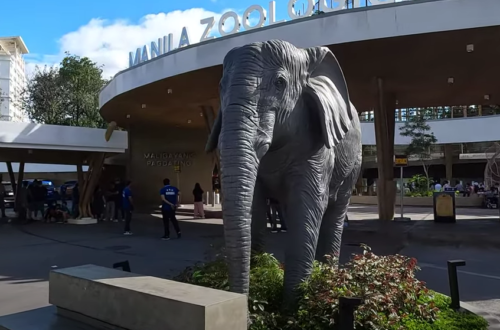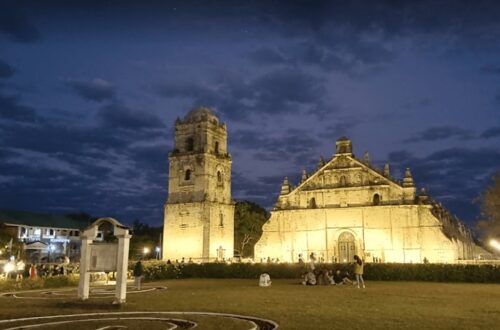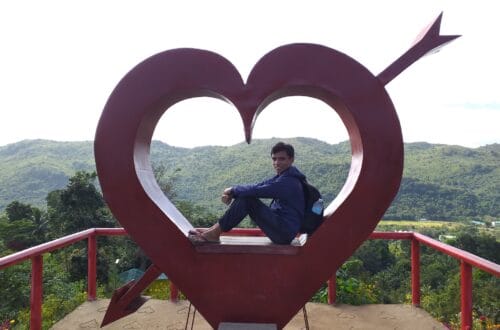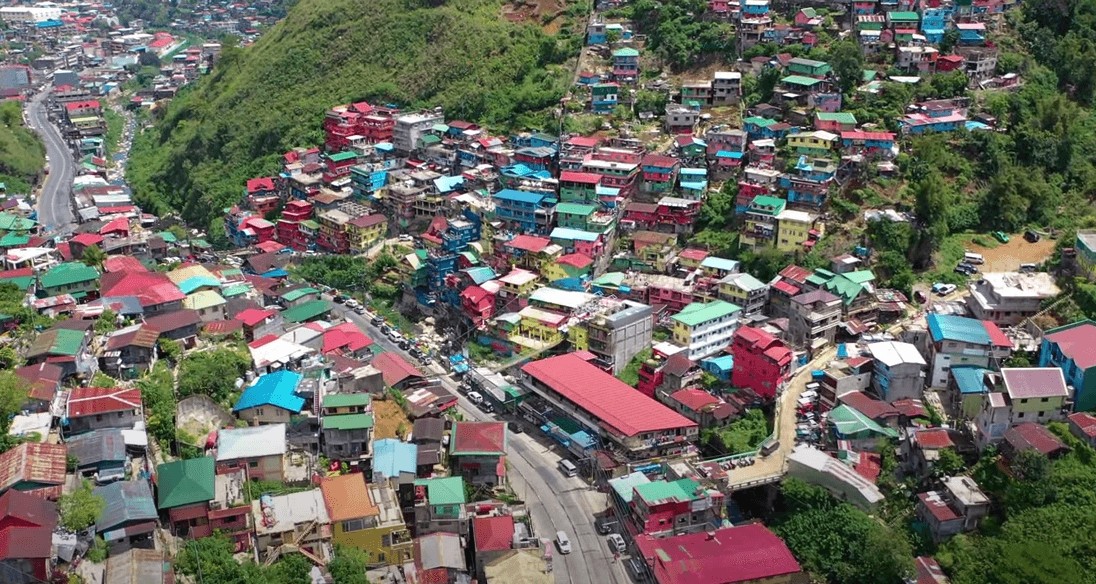
Valley of Colors
Background
Valley of Colors is a vast artwork composed of a firmly packed array of hillside homes in Benguet painted in colorful tints. Valley of Colors is located at Barangay Pico in the municipality of La Trinidad in Benguet province. It is situated near the Balili River and Bell Church which is a Buddhist temple and it is just four kilometers away from SM City Baguio.
According to its past history, Valley of Colors is a work of art enlisted as part of the Philippines Government project in the year 2016 to boost tourism in the country. The project was inspired by the Gamcheon Cultural Village of Busan in South Korea and the Favelas of Rio de Janeiro in Brazil. The project plan was to paint different colors in 18,000 square meters of all the houses in three villages of La Trinidad. The project’s main theme is the sunflower because the place is full of sunflowers in the past decade. For this reason, in January 2016 around 200 houses on the verdant mountains of Barangay Balili were engaged in the project.
The houses were colored in a lovely artistic way with the help of the community, the Tam-Awan Village group, Davies Paints, and the Department of Tourism – Cordillera Administrative Region (DOT-CAR). Around 2800 gallons of paint were used and five hundred twenty people including local artists and volunteers participated in painting to complete the project. The six volunteers organization that take part are NSTP (National Service Training Program) students from King’s College of the Philippines and Benguet State University, Baguio – Benguet Photographers, Hikers, Artists Club, Boy Scouts of the Philippines of Benguet, PNP (Philippine National Police) trainees and Botiwtiw Women’s Brigade and Organization.
The project was finished in eighty days and it produce a colossal mural and concerted canvas. As a result, on June 23, 2016, the Colors of Stobosa became the first and largest community artwork in the Philippines. As a matter of fact, Stobosa is a shortened term for three hillside communities in Barangay Balili notably Stonehill, Botiwtiw, and Sadjap. It is where the Valley of Colors can be found which is locally known as the Stobosa Hillside Homes Artwork.
In the year 2018, the Valley of Colors is the setting and backdrop of the great Philippine drama television series named The Blood Sisters featuring Erich Gonzales. The Blood Sisters’ story revolves around the lives of triplets named Agatha, Carrie, and Erika who were detached during birth. The Valley of Colors is where Agatha one of the triplets grew up with the sisters’ biological mother and a broad portion of it was filmed in this vibrant place.
Presently, the Valley of Colors is one of the well-known tourist attractions in La Trinidad, Benguet. It is a welcoming perception as visitors pass the Baguio – La Trinidad – Bontoc Road or Halsema Highway. It is visited by thousands of tourists every year and it is served as a demonstration of the Bayanihan spirit and culture among Filipinos. Therefore, if your group plans to visit Baguio City make sure that the Valley of Colors is included in your detailed itinerary going to the Northern Luzon region to see the very utterly designed set of houses.

Name: Valley of Colors
Address: Barangay Pico, La Trinidad, Baguio, Benguet
Features: colorful houses and a hanging bridge
My trip to Valley of Colors
In the past days, I joined an organized day tour trip going to Baguio City which includes visiting the Valley of Colors as part of our itinerary and side trip. Saturday morning when our group arrived at Baguio City and started exploring the City of Pines and the Summer Capital of the Philippines’ famous tourist attraction. At that time, I noticed that most of the group members are solo joiners too. So as time passes by and when our group started taking pictures, little by little we get comfortable with each other.
Then after five hours of touring, we had our lunch at Hill Station on Upper Session Road. From there we get to know each other and have a nice group lunch experience. Also, I noticed the restaurant’s soft music in the background makes our conversation worthwhile and relaxing. After our satisfying lunch, our group decided to go to Bell Church and Valley of Colors. It was 2:45 pm in the afternoon when our group arrived at Valley of Colors.
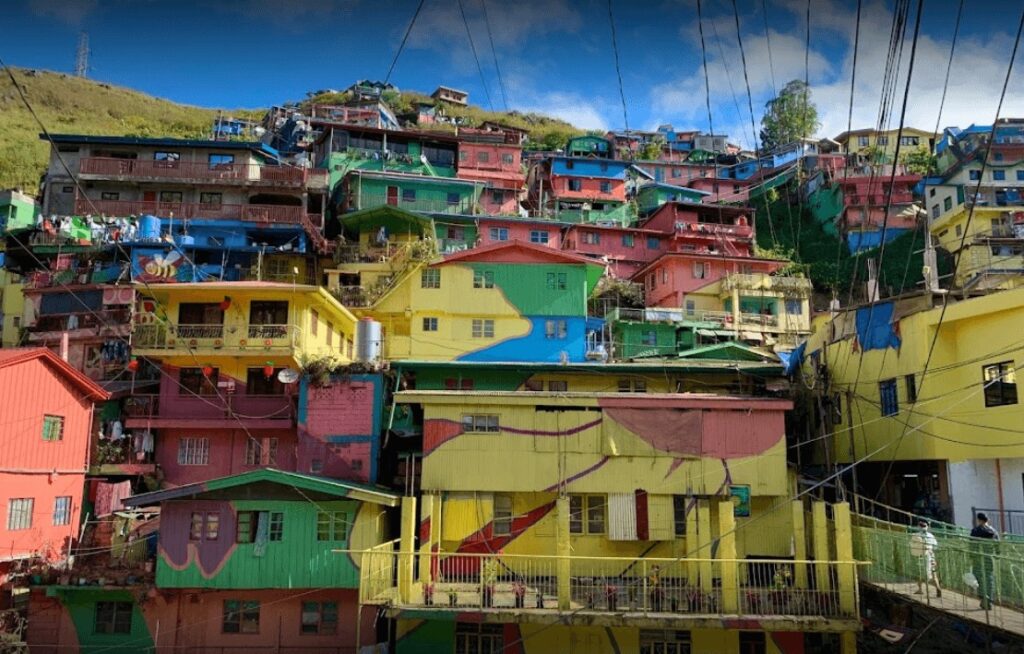
First, we noticed that from the roadside or main road, we can clearly see the elegantly painted houses across the Balili River and the hillside of Barangay Pico which is truly refreshing to the eyes. Then as we started walking we spotted many visitors taking pictures at the hanging bridge place over the stream. I said to myself the enthralling colorful houses make the place really Instagrammable and eye-catching to the human eye.
It’s really entertaining to see the creativity of Filipinos which provide a stunning and mesmerizing backdrop for travel photos. To be honest, I never saw such a beautiful display of houses on the side of the hills before. The painting on the house is made so that all the houses suit each other. In addition, the collective effort to build this tourist attraction is really rewarding.
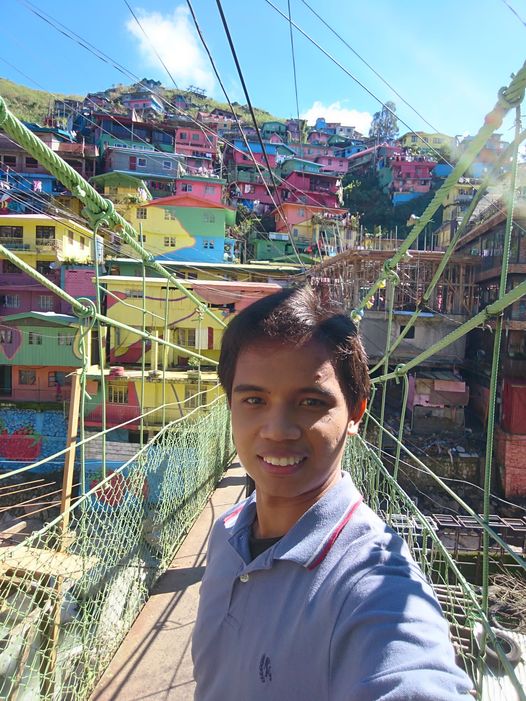
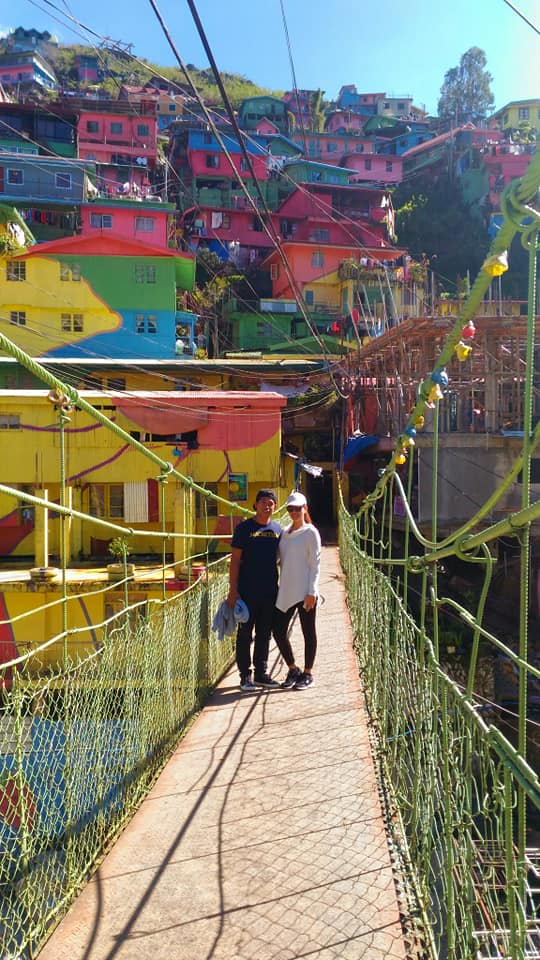
I really like the vibrance of the village and the picturesque hillside. When our group finally have a chance to snap pictures at the hanging bridge, I immediately take a selfie as a remembrance of this impressive work of art. I really love the concept and it never fails to amaze me. It is really quite attractive and it’s very akin to colorful slum houses in Brazil. The vibe is more South American, and I feel more in Peru than in the Philippines. Even so in my opinion, Valley of Colors is a much better version compared to Favelas of Brazil because it’s a two to three-story house made with concrete and locals own the land. It’s not a typical slum village.
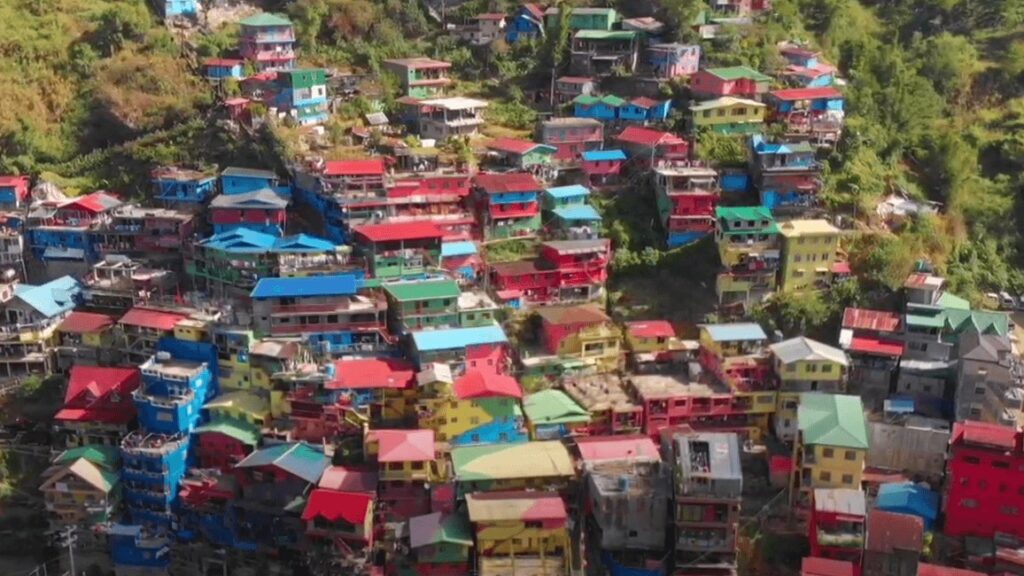

Then one member of the group flies his DJI Mavic drone camera into the clear sky to capture the spectacular view at the top. Our group stays at Valley of Colors for less than twenty-five minutes. Before I leave the colorful environment, one thing that came to my mind, I hope the Local Government Unit (LGU) of La Trinidad municipality will improve the view deck and the parking space in order for the tourist to be more comfortable and not feel crowded. Also, I wish that this kind of great artwork will prevail all over the Philippines. Nevertheless, we have a rewarding side trip before our group goes to La Trinidad Strawberry Farm. Without a doubt, the Valley of Colors has caught the attention of all commuters and visitors passing the Halsema Highway. Truly, it’s a feast of colors for the eyes.
Things to bring on your visit to Valley of Colors:
High-end camera
Smartphone
Jacket
Pants or jeans
OOTD (Outfit of the day) clothes
Fashionable facemask
How to Go to Valley of Colors
By commute
- From Baguio City Market, walk for a few meters going to La Trinidad Jeepney Terminal station on Magsaysay Avenue.
- At La Trinidad Jeepney Terminal station, ride a passenger jeep bound for Valley of Colors. The jeepney fare is around 12 pesos.
By private car
- Pin the Valley of Colors in your Waze app or Google Maps. From Baguio City, take the Baguio – La Trinidad – Bontoc Road going to Valley of Colors. The approximate travel time is twenty-five minutes.
Note: The Valley of Colors is situated on the right side of the Baguio – La Trinidad – Bontoc Road and it’s just a few meters away from the welcome arch of La Trinidad. In addition, if you don’t have your own car then you may ride a taxi going to Valley of Colors. The taxi fare is around 150 pesos.
Reminders and Tips:
- Currently, Valley of Colors has no entrance fee, and it’s open every day. In addition, you can donate any amount of money to help preserve the place.
- Put your garbage in designated proper bins in order to keep the place clean and preserve.
- As of 2023, Valley of Colors is open to all tourists coming from different parts of the Philippines.
- The best time to visit the Valley of Colors is during sunny days to better appreciate the surroundings and the Colors of Stobosa.
- Please take note during the summer and holiday season, it is very difficult to park near the Valley of Color because of too many visitors going in and out.
- There are three good spots to take pictures at the Colors of Stobosa. First is the drop-off point or waiting shed. Second is the hanging bridge which connects the colorful houses. Third and last is the Sitio Upper Cogcoga which offers visitors a different perspective of the vast mural and colorful hillside community. I highly recommend crossing the bridge and hiking all the way up through the neighborhood as long as it’s not too hot or too wet and you’re in decent shape. It will take you more or less fifteen minutes depending on your pacing to be at the viewing deck and you will be rewarded with a really nice view.
- It is very essential to respect the place, fellow tourists, and the locals living there.
There you have it, sightseer. Normalize being happy without being in a relationship. Overall, I hope this Valley of Colors blog has been thoughtful to you and make you visit this place in the near future. Be safe and good luck on your trip.


